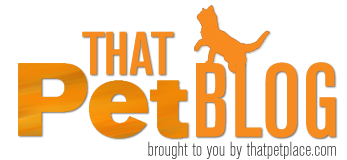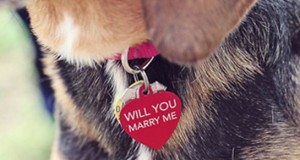 The Guinea Pig has been domesticated for over 5,000 years (please see article below). It’s no secret that domestication can radically change an animal’s appearance – most taxonomists now consider the Domestic Dog to be a subspecies of the Gray Wolf, and not a distinct species – but you’d never guess that when viewing a Maltese and a Wolf side-by-side!
The Guinea Pig has been domesticated for over 5,000 years (please see article below). It’s no secret that domestication can radically change an animal’s appearance – most taxonomists now consider the Domestic Dog to be a subspecies of the Gray Wolf, and not a distinct species – but you’d never guess that when viewing a Maltese and a Wolf side-by-side!
Domestication also affects survival skills – while Cats, Ferrets and some Dogs may slide seamlessly from pampered pet to “wild” creature (I’ve seen photos of a feral Husky leading a Wolf pack and bringing down a Caribou), others, such as Sheep and Chickens, usually cannot. Brain size may be reduced as well, with domestic animals usually having smaller brains than their wild ancestors.
Domestication’s Effects-Brains and Brawn
However, according to a recent (March, 2010) article in the journal Frontiers in Zoology, while domestication has reduced brain size in Guinea Pigs, it apparently has not affected their problem-solving abilities. Researchers at Germany’s University of Munster found that domestic Guinea Pigs were actually better at deciphering symbols than were wild Cavies (their presumed ancestor). The Cavies, however, proved physically stronger in demanding tasks, such as swimming.
The animals used in the test were placed in a tank of water and had to find a platform hidden beneath the surface by using symbols on the tank’s walls as a guide. I thought this to be rather complicated for an animal that does not normally spend much time in the water, but all were able to complete the task (not sure how good I’d do!).
The researches theorize that long association with people and the mazes and cages they create has led the rodents to evolve their unique problem-solving abilities.
Further Reading
Please see The Guinea Pig: History in Captivity and Wild Ancestors for some of the unusual facts and interesting history surrounding this popular pet and invaluable lab animal.
Wild Cavy image referenced from wikipedia and originally posted by Petra Karstedt
 That Pet Blog That Pet Place Pet Blog
That Pet Blog That Pet Place Pet Blog


Well, I just bought my 2 guinea pigs in december, so I haven’t really had a chance to test their intelligence yet. They did do a great job at taming, though, I was actually impressed. I wouldn’t make them swim, though, can anyone think of other methods? I’ve noticed they do learn fast, and for instance when i say “salad” one of them starts wheeking. When I say “up,up” the other one jumps in my hands so that I let her out for playtime.Otherwise she isn’t sure if she should jump 😀
Good article!
Hello Roxana, Frank Indiviglio here.
Thanks for your interesting comment and the kind words, much appreciated.
I agree – swimming is a bit much! However, the method you’re using, associating a reward with an action, is perfect…especially impressive that one jumps into your hand, as that is more than a simple food-association. Continue with some other basic associations – the more they learn, the quicker they will be to acquire new skills. Eventually you can introduce more complicated actions – i.e. pushing a ball in order to get a reward. You might use an especially favored treat (carrots work well) when training them.
Good luck and please keep me posted…its very useful for other guinea pig owners to read about your success.
Best regards, Frank Indiviglio.
One of my guinea pigs, Flashbang Fatbottom, was quite smart! And he was a pigloo (a small plastic hut shaped like an igloo) driver. Here’s an example of his intelligence –
Benito, another piggy, poked Flashbang Fatbottom in the rump once to get to the hay pile. Flashbang immediately runs into a pigloo, and then starts driving the pigloo towards Benito! Benito happened to move out the way, so Flashbang drove the pigloo all the way to the side of the cage and bumped into the wall. Flashbang ran out of the pigloo to check his surroundings, got back in the pigloo, turned it around, and then started motoring towards Benito again! This time he got Benito with the pigloo (just a little bump.) Pretty smart!
Hello Jocelyv,
Thanks for the interesting observation…perhaps more skilled than some of the human drivers I know!
Best Regards, Frank